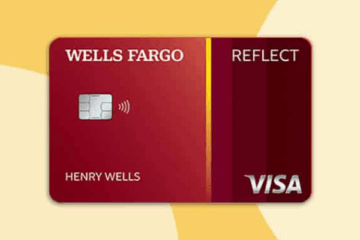How to Create a Simple and Efficient Household Budget That Actually Works
In today’s fast-paced, consumer-driven world, it’s easy to feel like your money disappears the moment it hits your bank account. The rising cost of living, credit card debt, unexpected bills, and the temptation to keep up with lifestyles on social media can leave many Americans feeling financially stretched — even those earning a decent income. For middle-class households across the U.S., budgeting isn’t just a good habit — it’s a vital tool for financial survival and stability.
Advertising
But let’s face it: when people hear the word “budget,” they often imagine spreadsheets, strict rules, and saying goodbye to anything fun. That mindset is one of the biggest reasons why so many budgeting attempts fail. A real, effective household budget isn’t about depriving yourself — it’s about understanding your financial reality, regaining control, and making choices that align with your values and goals.
Advertising
In this guide, we’ll walk through how to build a simple and efficient budget that works with your lifestyle, not against it. No financial jargon, no unrealistic expectations — just a human-centered approach that helps you use your money with more purpose and less stress.
Budgeting Isn’t About Math — It’s About Clarity
One of the first things to understand is that budgeting isn’t a math problem. It’s a reflection of how you live your life. When done right, your budget should show you:
Advertising
What your fixed financial obligations are
Where your money goes without you noticing
How much freedom you actually have to spend or save
What trade-offs you’re making — consciously or not
Without a budget, even a six-figure salary can lead to debt, stress, and missed opportunities. With one, even a modest income can provide peace of mind and progress toward your goals.
Step 1: Start With a Conversation, Not a Calculator
Before you crunch numbers, take a moment to ask yourself and your family: What do we want our money to do for us? Maybe you want to save for a house, pay off credit cards, or simply stop living paycheck to paycheck. Budgeting starts with intention.
Sit down with a notebook — or even just your thoughts — and outline what financial stability looks like to you. Is it having a buffer in your account at the end of the month? Being able to travel without putting it on a credit card? Retiring without fear? Defining success is the first step toward achieving it.
Step 2: Understand Your Real Income
To build a budget, you need to know your actual income — not just your salary on paper. Look at what hits your account after taxes, health insurance, retirement contributions, and any other deductions.
If you work multiple jobs or receive irregular income (like tips, commissions, or freelance work), calculate your average monthly income over the past 3 to 6 months. This gives you a realistic baseline.
For couples or families, include all sources of household income. Be honest and conservative. Overestimating will only make budgeting harder down the road.
Step 3: Track Every Dollar — At Least Once
You don’t need to track your spending forever, but doing it for one full month is a game-changer. Most people are shocked when they see how much they spend on coffee, takeout, subscriptions, or quick trips to Target.
Use whatever method feels natural — an app like Mint or YNAB, a spreadsheet, or pen and paper. The goal isn’t perfection. It’s awareness.

When you know where your money is going, you stop operating on assumptions. You start making choices. And that’s the whole point.
Step 4: Break It Down by Purpose — Not Just Category
Traditional budgeting tells you to divide your spending into categories: housing, food, transportation, etc. That’s useful, but let’s take it further. Think of each expense in terms of its purpose:
- Essentials: Things you must pay to keep your life functioning — rent, utilities, groceries, gas
- Security: Payments that protect your future — insurance, savings, debt repayment
- Enjoyment: What makes life feel worth living — restaurants, hobbies, streaming services
- Noise: Things that cost money but don’t really add value — impulse buys, unused subscriptions, fees
This lens helps you prioritize more clearly. If you’re spending more on “noise” than “security,” that’s a red flag. If your “essentials” are taking up 80% of your income, your lifestyle may be stretched too thin.
Step 5: Create a Monthly Plan You Can Actually Follow
Now that you’ve tracked your spending and defined your priorities, it’s time to create the actual budget. Keep it simple:
- Write down your total monthly income (after taxes).
- Subtract all your fixed expenses (rent/mortgage, car payment, internet).
- Estimate your variable expenses (groceries, gas, dining out).
- Allocate money toward financial goals (savings, paying off debt).
- Leave room for flexibility — unexpected costs will come.
The goal isn’t to account for every single dollar to the cent. It’s to give your money a structure, so you decide how it gets used — not your habits, not the advertisements you see, not your neighbor’s lifestyle.
Step 6: Automate and Simplify
One reason people abandon their budgets is because it feels like too much work. That’s where automation helps.
- Set up automatic transfers to savings right after payday.
- Schedule auto-pay for bills to avoid late fees.
- Use cash-back cards or apps to passively reduce spending.
- Unsubscribe from marketing emails that tempt you to buy.
The less friction between you and your goals, the better. You don’t need willpower — you need systems.
Step 7: Review, Reflect, and Adjust
A budget is not static. Life changes. Income changes. Priorities change. So should your plan.
At the end of each month, spend 10–15 minutes reviewing:
- Did I stick to the budget?
- Where did I overspend?
- What unexpected expenses came up?
- Did I make progress toward my goals?
Use the answers to adjust next month’s plan. A budget that evolves with you is more likely to stick.
Step 8: Include Joy and Rest in Your Plan
This part is often left out of budgeting advice, but it’s crucial: if your budget doesn’t allow room for enjoyment, it will never work.

Financial discipline without joy becomes punishment. And no one sticks with punishment for long. Build in space for treats, hobbies, travel — whatever makes you feel alive. Just do it with intention, not guilt.
Also include “rest” in your budget — time and money for self-care, mental health, slowing down. Financial well-being is part of overall well-being.
Final Thoughts: A Budget Is a Declaration of Freedom
There’s a quiet strength in knowing exactly how much you have, where it’s going, and what it’s doing for you. It removes anxiety. It creates possibilities. And it gives you power — the power to say no when needed, to say yes with intention, and to sleep at night knowing your money is working for you, not the other way around.
Building a simple and efficient household budget doesn’t require perfection or advanced math. It just requires honesty, consistency, and compassion with yourself. You don’t have to get it right the first time. You just have to begin.
Read also: The 10 best cards of 2025
So take that first step. You deserve a financial life that feels stable, empowering, and aligned with who you are.





